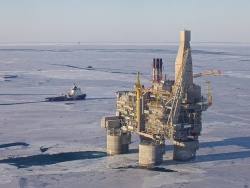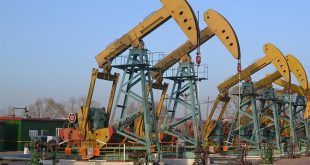
Many analysts and commentators in the last year are concerned about finding the answer to one question, formulated in different ways: what is the real price of American shale oil, what is the cost of its production, what is the financial sustainability of extractive companies in the United States, whether they are hedged, what are the limits of development technologies and increase the efficiency of production and etc. Studied accounting reports, build models, make predictions, to understand what to expect from oil shale mining.
In our opinion, the efforts of industry intellectuals sent to the target: it is a key industry development issues – there are topics more important.
Slates and market
Yes, the U.S. shale revolution has dramatically changed the energy picture of the world, this phenomenon was unexpected by the majority of market players both in the major oil-producing countries and in the USA. To understand the origins and the prospects of U.S. shale production is very fascinating, but more interesting and more important to try to see the big picture – what is really happening in the global oil industry and what are the medium-and long-term prospects of its development.
Shale gas revolution – natural phenomenon, this business of thousands of representatives of various sectors of private business in the U.S., they are nobodies and are not encouraged and are not subsidized. Contrary to popular speculation, the special Federal benefits in the US shale businesses get all the tax incentives on the state level, in accordance with local laws, and not individually. Federal incentives to domestic producers is that President Obama at every budget bargain with Congress unsuccessfully sought from the oil companies to take away all of the oil companies. The shale revolution is only subject to market laws.
The energy information administration, U.S. (EIA) for a long time did not notice the boom in shale gas production, but in terms of oil tight reservoirs, trying to be careful. This theme is under the scrutiny of interested observers around the world, and in the United States accuracy analysis and realistic projections of the EIA are subjected to constant criticism. Therefore, official government analysts are constantly improving their work. In particular, EIA now collects data on production not only from regulators oil-producing States, but also directly from companies that have to file in Washington the appropriate reporting forms. Accordingly, the quality of production statistics is improving.
In 2014, after the scandalous publication in the journal Nature criticizing the official oil forecasts, EIA has revised its models and expanded data sources for the preparation of the annual forecasts. Therefore, at the present time can be considered long-term statistics and the EIA forecasts are the most credible.
Shale oil production in the U.S. in 2015 reached a peak (less than 5 million barrels./day) and the beginning of the decline. This information to closely monitor traders, stockbrokers, merchants as “paper oil” and the real volumes. It is important for them to capture the moment of fracture, when the price reaches bottom and starts to rally. For speculators it is the main driver of short-term market volatility.
On the horizon of weeks and months can and should be expressed the meaning of the U.S. shale production as the balancing source of oil market. Price increases will be put into operation thousands of drilled, but not completed the hydraulic fracturing of wells. This practice, called “delayed fracture” (fracklog), has become popular with companies that are not highly indebted and has the appropriate financial capacity. They are a sharp decline in the cost of drilling on the highly competitive American market and have done considerable groundwork in the form of “blanks” in the future, when conditions seem to be quite attractive for investors.
The market of these wells will produce an explosive effect, the global market will feel the excess supply and the price will revisit if the main market players will perceive this situation seriously. This will be the moment of the balancing market, and for the first time in this role will perform not Saudi Arabia, and the United States.
Now some companies will not be able to withstand the adverse price situation, no one should be mislead: even in the case of a mass bankruptcy of companies and their shale assets will not cease to exist, withdraw from the market, and just changed owners. But mass bankruptcy is not going to happen – the last time there were signals that the regulators (in particular, it is known about in Texas), we strongly advise companies to declare bankruptcy, offering instead to share with creditors assets.
If to speak about the medium and the longer term, the role of shale production no one is inclined to overestimate. In the baseline scenario of the last annual long-term forecast 2015 EIA (Annual Energy Outlook, AEO2015), in 2020, oil production in the U.S. will reach 10.6 million barrels./day. In the case of high oil prices production will be 12,29 million barrels./night, at low prices to 9.96 million barrels./day. And only when you are perfect, fantastic scenarios, when high oil prices will be combined with high oil and gas resources, production in 2020 will amount to 12.61 million barrels./day. The forecast for 2020 laid such price of Brent (in current dollars): low – $65/bbl., basic – $90/bbl., high – $167/bbl.
Long-term forecast shows that there were three realistic scenarios production after 2020 will not grow. In a scenario of high prices fall will begin production in 2030 and 2040, oil production in the US will return to the current level ($263/bbl. and $416 per barrel. respectively). At low prices ($91/bbl. and $120/bbl.) the decline will begin after 2020, in the baseline scenario (at $142/bbl. and $229/bbl.) too, but will not be as sharp.
AEO2015 was released in the spring of 2015, and prepared long before the day of release. Perhaps, in the annual forecast that EIA is working on would take into account the current situation and the General depressive mood of the oil market. Anyway, hardly worth the wait that the next prediction is significantly more optimistic than the current one.
These forecasts can be trusted as “estimates from above”. The fact that the EIA forecasts are increasingly criticized as overly optimistic. In particular, the famous canadian geologist David Hughes, who’s opinion is respected by the professionals in the U.S., regularly publishes its own assessment of American shale hydrocarbon resources. On the basis of information about production history, location of sites for drilling and the nature of the production decline in the wells David Hughes came to the conclusion that 98% of the projected EIA production on seven major plays (shale formations) can be characterized as reflecting “high” or “very high” degree of optimism of the government analysts.
Thus, it should be acknowledged that the shale gas revolution in the USA – a bright phenomenon, but limited in time and scope.
The U.S. as an oil exporter while the power is rather hypothetical. Cancel 40-year-old ban on oil exports in December 2015, has led to a convergence of levels, WTI and Brent, the American variety has a tendency to go forward (28 January 2016 a barrel of WTI cost $33,21 and Brent – $33,01). Therefore, the export of American oil at the first stage will be in trial mode for testing of new technological and logistic schemes, but not for acute commercial need.
In the long term on oil market will be stronger to affect growth of the U.S. proposal and other factors, such as the acceleration of world oil consumption, the rate of disposal of existing and the introduction of new large production facilities. Hence the conclusion about the true motives for the current behavior of Saudi Arabia, whose oil executives, contrary to popular belief, prone to rational behavior.
Arabian motifs
In December 2014, the Minister of oil of Saudi Arabia Ali al-Naimi in an interview with Middle East Economic Survey has clearly indicated their position: the market should remain the only highly effective producers; if you cut production, raised prices will benefit Russia, Brazil and the USA; from low oil prices primarily affected projects in the Arctic offshore, deep offshore Brazil and West Africa; Saudi Arabia has enough money to survive the period of low prices, whatever he lasted.
The Minister recalled that in 1997, Venezuela did not adhere to its quota as a member of OPEC and has increased production from 2 million to 3.7 million barrels./day, as a result of the excess supply of oil on the world market in conjunction with the Asian recession has led to a price collapse. It is obvious that Venezuela is now reaping the fruits of long-standing violations of the agreements. And it’s also clear that the contradictory desire of the members of OPEC do not allow now to talk about concerted action.
But we can confidently say that Saudi Arabia is not going over alone to bear the burden of stabilizing the oil market and, essentially, to subsidize inefficient members of OPEC. Moreover, the current situation with the Saudis on the hand and oil shale production in the U.S. helps them to achieve their goals – to get rid of potential competitors and preserve market share in the mid and long term horizon.
Not accidentally common place in the market was the judgment that the period of high oil prices forever was that the oil age is running out, it will be held, at the time, was the stone age – not because of the shortage of raw materials. Such sentiments should convince investors that major investments in long-term capital-intensive projects will not pay off never, what the risks are prohibitive and will remain so in the foreseeable future. This means that the investment decision on the planned projects will not be accepted, and the resulting investment pause will lead to the fact that in 10-15 years, Saudi Arabia will begin to take market share, expiring after the exhaustion of American oil shale mining, the depletion of North sea and West Siberian fields.
Whatever was by that time the price of oil, the Arab countries expect to be major beneficiaries as the most efficient producers. It follows that all the current maneuvers of OPEC, the leaders of which are concerned about finding the joint solution of all the world’s manufacturers on an agreed decline in production, a) pointless and b) contrary to the interests of the main member of the organization – Saudi Arabia.
But OPEC as a normal bureaucratic organization should mimic the activity, so the maneuvers will continue. Moreover, al-Naimi in the same interview stated that the goal of OPEC is not setting low prices, and the achievement of stability in the market. The main thing not result, and efforts, agreements, and negotiations. And the prices will add up by themselves.







